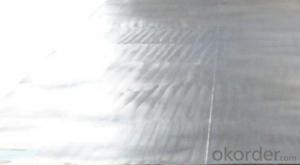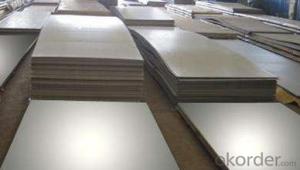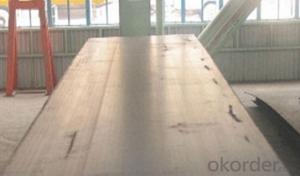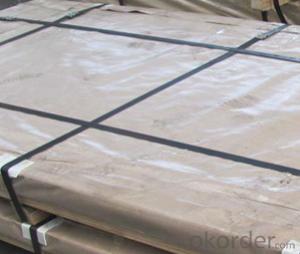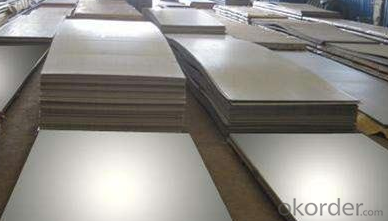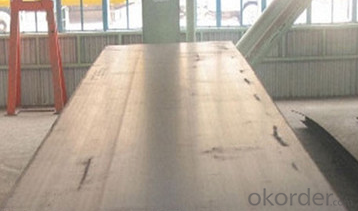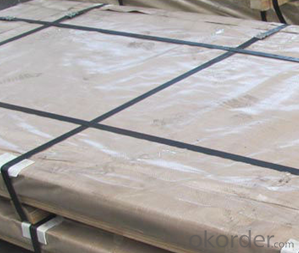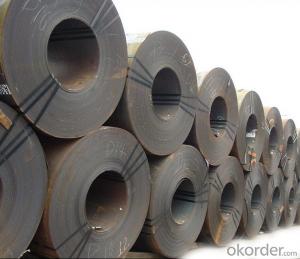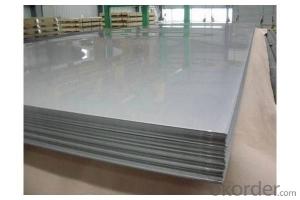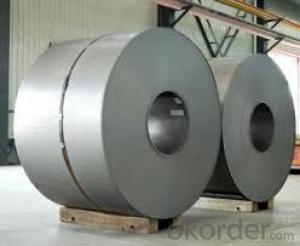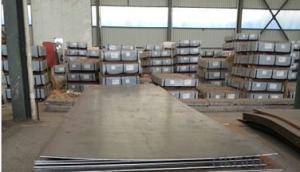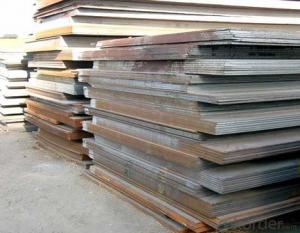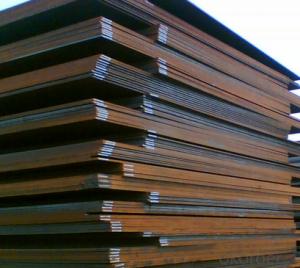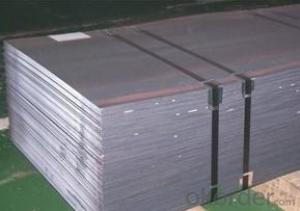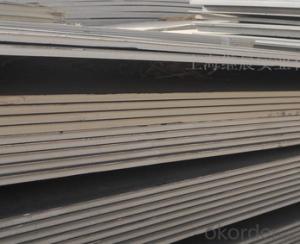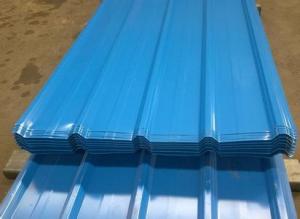Hot Rolled Carbon Steel Sheet Plate, ASTM A36 CNBM
- Loading Port:
- Qingdao
- Payment Terms:
- TT OR LC
- Min Order Qty:
- 10 pc
- Supply Capability:
- 30 pc/month
OKorder Service Pledge
Quality Product, Order Online Tracking, Timely Delivery
OKorder Financial Service
Credit Rating, Credit Services, Credit Purchasing
You Might Also Like
Quick Details
| Standard: | AISI, ASTM, DIN, GB, JIS | Grade: | A572,A573,A633,A678,A709,A710,G3101,G3136,etc | Thickness: | 1mm-200mm |
| Brand Name: | SHOU GANG GROUP, AN STEEL | Model Number: | Q235 | ||
| Type: | Steel Plate | Technique: | Hot Rolled | Surface Treatment: | Coated |
| Application: | widely | Special Use: | High-strength Steel Plate | Width: | 1000mm-3000mm |
| Length: | 1000mm-12000mm | Price Term: | FOB CIF CFR |
Packaging & Delivery
| Packaging Details: | standard seaworthy export packing or as the request of customers |
| Delivery Detail: | 10 days after deposit or according to customers' quantity |
Specifications
hot rolled carbon steel sheet
1.Thickness:1mm-200mm
2.Length:1000mm-12000mm
3.Width:1000mm-2000mm
hot rolled carbon steel sheet
| Product | HR steel plate prices carbon steel plate prices per kg |
| MOQ | 25 ton |
| Thickness | 1mm-200mm |
| Width | 1000mm-3000mm |
| Length | 1000mm-12000mm |
| Application | widely |
| Standard | AISI,ASTM,BS,DIN,JIS,GB,etc |
| Grade | A572,A573,A633,A678,A709,A710,G3101,G3136,etc |
| Tpye | Steel plate |
| Surfacing | Coated |
| Productive Technology | Hot Rolled & Cold Rolled |
| Port | |
| Payment Terms | L/C,T/T,Western Union,MoneyGram |
| Product Ability | 5000 tons per month |
| Delivery | 10 days after deposit or according to customers' quantity |
| Packing | standard seaworthy export packing or as the request of customers |
- Q: Can steel sheets be used for cladding?
- Yes, steel sheets can be used for cladding.
- Q: What is the thickness range for steel sheets?
- The thickness range for steel sheets can vary depending on the type of steel and its intended use, but it typically ranges from 0.4 millimeters to 6 millimeters.
- Q: How do you repair damaged steel sheets?
- To repair damaged steel sheets, the first step is to assess the extent of the damage. Small dents or scratches can often be fixed by using a hammer or mallet to gently pound out the imperfections. For larger damages, welding or brazing techniques can be used to join the separated parts. In some cases, the damaged section may need to be cut out and replaced with a new piece of steel. It is important to ensure the repaired area is properly cleaned, prepped, and painted to prevent future corrosion.
- Q: How durable are steel sheets?
- Steel sheets are known for their exceptional durability. They are highly resistant to impact, corrosion, and extreme weather conditions, making them an ideal choice for various applications, including construction, automotive, and manufacturing industries. With proper maintenance, steel sheets can maintain their strength and integrity for decades, ensuring long-lasting performance and reliability.
- Q: What is the process of etching or engraving on steel sheets?
- The process of etching or engraving on steel sheets involves several steps to create intricate designs or patterns on the surface of the metal. Here is a general overview of the process: 1. Design and Preparation: The first step is to create or choose a design that will be etched or engraved onto the steel sheet. This design can be hand-drawn or created using computer software. Once the design is finalized, it is transferred onto a film or stencil. 2. Cleaning the Steel Sheet: Before beginning the etching or engraving process, the steel sheet needs to be thoroughly cleaned to remove any dirt, grease, or oxidation. This is typically done using a solvent or a degreasing agent to ensure a clean and smooth surface for the etching or engraving. 3. Applying the Stencil: The stencil or film with the desired design is carefully applied to the steel sheet. This stencil acts as a protective barrier, preventing the etching or engraving solution from affecting the areas that should not be etched or engraved. 4. Etching or Engraving Solution: A specialized etching or engraving solution is selected based on the desired effect and the type of steel being worked on. This solution is applied to the exposed areas of the steel sheet, where the stencil has not been applied. The etching or engraving solution chemically reacts with the steel, removing a thin layer of metal to create the desired design or pattern. 5. Control and Timing: The etching or engraving process requires careful control of factors such as temperature, time, and concentration of the solution. These parameters can affect the depth and quality of the etching or engraving, so it is crucial to closely monitor and adjust them as needed. 6. Rinsing and Cleaning: Once the desired etching or engraving depth is achieved, the steel sheet is thoroughly rinsed to remove any remaining solution. This step is essential to stop the chemical reaction and prevent any further etching or engraving. 7. Finishing Touches: After rinsing, the steel sheet may undergo additional steps to enhance the appearance of the etched or engraved design. This can include polishing, buffing, or applying protective coatings to improve durability and visual appeal. Overall, the process of etching or engraving on steel sheets requires precision, attention to detail, and the use of specialized tools and chemicals. It is a skillful art form that can produce stunning and intricate designs on steel surfaces.
- Q: Are steel sheets resistant to impact damage?
- Yes, steel sheets are generally resistant to impact damage due to their high strength and durability. They can withstand heavy blows and impacts without cracking or breaking, making them suitable for applications where impact resistance is required.
- Q: What is the average price of steel sheets?
- The average price of steel sheets can vary depending on factors such as size, thickness, and quality. It is recommended to consult with suppliers or check market prices for the most accurate and up-to-date information.
- Q: Are the steel sheets suitable for water tank fabrication?
- Yes, steel sheets are suitable for water tank fabrication. They are durable, corrosion-resistant, and can withstand the pressure and weight of the water. Additionally, steel sheets can be easily shaped and welded, making them an ideal choice for constructing water tanks.
- Q: Can steel sheets be used for insulation in buildings?
- No, steel sheets cannot be used as insulation in buildings. Steel is a highly conductive material, meaning it allows heat to pass through it easily. Insulation, on the other hand, is designed to resist the flow of heat, keeping the interior of a building warm in winter and cool in summer. Materials such as fiberglass, foam, or cellulose are commonly used for insulation as they have low thermal conductivity.
- Q: What are the common applications of galvanized steel sheets?
- Galvanized steel sheets are commonly used in various applications such as roofing, siding, gutters, and downspouts, as they offer excellent corrosion resistance and durability. They are also utilized in the automotive industry for body panels, chassis, and structural components due to their strength and resistance to rust. Additionally, galvanized steel sheets find application in the construction sector for steel framing, fences, and outdoor structures, as well as in the manufacturing industry for HVAC ductwork, electrical enclosures, and appliances.
Send your message to us
Hot Rolled Carbon Steel Sheet Plate, ASTM A36 CNBM
- Loading Port:
- Qingdao
- Payment Terms:
- TT OR LC
- Min Order Qty:
- 10 pc
- Supply Capability:
- 30 pc/month
OKorder Service Pledge
Quality Product, Order Online Tracking, Timely Delivery
OKorder Financial Service
Credit Rating, Credit Services, Credit Purchasing
Similar products
Hot products
Hot Searches
Related keywords
